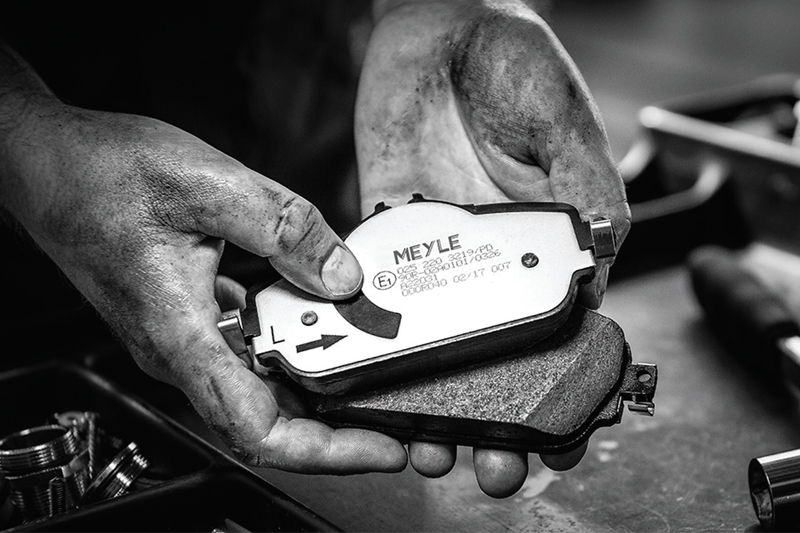
Stefan Bachmann, Head of Meyle’s Brakes and Drivetrain Product Team, gives PMM the lowdown on brakes, driver types and noise.
PMM: Brake pads are not always the same, so which factors and driver types can be distinguished when it comes to brake pads?
Stefan Bachmann (SB): When it comes to brake pads, we distinguish between the ‘classic’ and the ‘sportier’ driver. The classic driver places a lot of emphasis on comfort, whereas the sporty, ambitious driver attaches greater importance to performance. We have developed the Meyle-Original and Meyle-PD product lines so that we can offer a suitable product for both driver types. While the Meyle-Original brake pads focus on the lowest possible background noise for the ‘classic’ driver, the Meyle-PD brake pads focus on performance for sporty driving and tight response. With the new ‘next generation’ Meyle-PD brake pads, we have succeeded in combining the best of both worlds by developing both performance-oriented and low-noise brake pads.
PMM: What kind of trends and developments does Meyle observe?
SB: We note a clear trend towards sensitive perception of sounds. This development is easy to understand, especially in relation to electromobility. By eliminating engine noises, the driver becomes more sensitive to noise in the vehicle, so previously unnoticed brake noises can now be perceived as disturbing. Last but not least, the increasing demand for emission reduction should also be mentioned. Brake dust development plays a key role here, and we will focus our research and development activities on this in the coming years. These requirements, combined with better or constant performance of the brake pads and discs, represent a particular challenge for the industry in the coming years.
PMM: Are noises during braking particularly bad? Which factors and components can be influenced in product development to minimize brake noise?
SB: A squeaky brake does not mean a broken brake pad or disc. First and foremost, it must be said that there are actually brake systems with mechanical wear contacts. Instead of a message in the cockpit about the wear, a squeaky noise sounds when braking. As a rule, the sportier the brake pads are, the more they tend to squeak. In the case of ‘sporty’ drivers, higher loads can result in stronger vibrations between the brake pads and the brake disc, which can be perceived by the driver as disturbing or squeaking in certain frequency ranges. In addition, ‘neighbouring’ components such as control arm bushings can wear out, and the vibration is then transmitted in the direction of the last component of the overall suspension – the brake. Nevertheless, a squeaky brake can also mean that there is a fault in the brake system or that incorrect brake components have been installed.
PMM: What are ECE certifications and what do they mean for Meyle brake components?
SB: The ECE certification is based on EU regulations that define quality standards for different components. The product range for brake technology in the independent aftermarket is regulated throughout Europe by the ECE R90 standard. Foreign regulations are also based on this standard. According to this directive, every new brake component must be tested for function and quality by independent institutes before series production starts. The results are then transmitted to the responsible state authorities after the parts have been tested. If everything has been successfully passed, the authorities issue corresponding certificates to the parts manufacturers.









